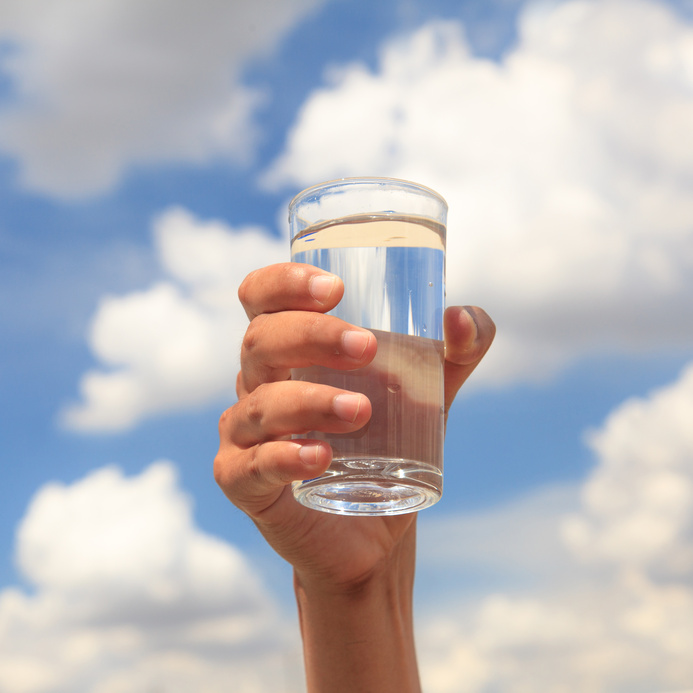Go with the flow: what kind of water filter is right for you?
June 8, 2014
 I’ve been writing the Ecoholic column for, oh, a decade now (actually it was just Ecoholic’s 10 year anniversary!) and some questions trickle in again and again in my inbox. Probably one of the most common reader Qs I get is about water filters. I write about them every few years but the thirst for knowledge of this front never ceases. So I revisited the topic in a recent column, and boiled down the latest info on filter types. We weighed environmental factors against filter quality. Writing about environmental health, I’m certainly straddling two worlds – a lot of enviros will tell you they don’t own water filters (from an environmental footprint perspective, tap is greenest), but holistic health peeps are highly concerned with filtering out trace contaminants. The final call is yours. But if a filter is effective but super wasteful, sorry, points have to be docked. We also scored filters by type, not by brand (so your particular pitcher filter might score higher). Without further ado…
I’ve been writing the Ecoholic column for, oh, a decade now (actually it was just Ecoholic’s 10 year anniversary!) and some questions trickle in again and again in my inbox. Probably one of the most common reader Qs I get is about water filters. I write about them every few years but the thirst for knowledge of this front never ceases. So I revisited the topic in a recent column, and boiled down the latest info on filter types. We weighed environmental factors against filter quality. Writing about environmental health, I’m certainly straddling two worlds – a lot of enviros will tell you they don’t own water filters (from an environmental footprint perspective, tap is greenest), but holistic health peeps are highly concerned with filtering out trace contaminants. The final call is yours. But if a filter is effective but super wasteful, sorry, points have to be docked. We also scored filters by type, not by brand (so your particular pitcher filter might score higher). Without further ado…
PITCHER/GRANULATED CARBON
Your least expensive level of protection. Most rely on granular activated carbon, which is quite effective at getting rid of trace pharmaceuticals in water but not good enough at reducing lead to meet certifier standards. To be honest, pitchers are fine if you’re not all that worried about your water quality and you just don’t want the taste of chlorine. A basic Brita pitcher is certified to reduce “cadmium, chlorine, copper, mercury, taste/odour, zinc.” Mavea is also certified against perc (the dry cleaning chem). Santevia isn’t certified (by a water quality organization) but says it also alkalizes. Only one pitcher in Canada is certified to reduce lead, chromium, chlorine and other heavy metals: ZeroWater. Overall, pitchers scored a 2/5.
DISTILLED
This energy-intensive filtration system basically vaporizes water, then captures the steam. It’s top-notch at killing bacteria and viruses (useful in rural settings with no municipal water treatment), but it also strips all the beneficial minerals out of water, which explains why the World Health Organization advises against it. It doesn’t remove chlorine or chlorine disinfection by-products like chloroform, hence why distillers often also run water through a carbon block filter. 2/5
ULTRAVIOLET
Zapping untreated water with UV light is another great way to kill off bacteria. In fact, the city of Toronto voted to treat wastewater at Ashbridges Bay with UV a few years ago to eliminate carcinogenic chlorine disinfection by-products. But to be honest, urban households getting treated tap water needn’t bother getting a system that includes UV. It’s largely a waste of electricity for urban home use, so we’re docking points. 2/5
REVERSE OSMOSIS
A long-time fave in the holistic community, since RO systems get rid of a lot of stuff not tackled by carbon filters, like fluoride, arsenic, bacteria and hexavalent chromium (made famous by Erin Brockovich). It also strips mineral content and doesn’t inherently get rid of chlorine or volatile organic compounds (VOCs). Not all RO filters are created equal – some do more than others. (See ewg.org’s water filter guide.) Where it loses points is waste: an RO system dumps three to 20 times more water than what it sends out of the tap. Probe before you buy.3/5
CARBON BLOCK
These super-condensed carbon filters are the type recommended by the Silent Spring breast cancer report (see column). They won’t remove fluoride (gotta combine it with reverse osmosis or alumina for that) or hex chromium, but are great for chlorine, lead, other heavy metals and a long list of VOCs. They don’t take extra energy or water to run, making them inherently greener. Shaklee makes a carbon block pitcher, though it’s certified to reduce less. Quality varies among countertop, faucet-mounted and under-sink versions. (See ewg.org’s filter guide.) 4/5
This article originally appeared in NOW Magazine.
